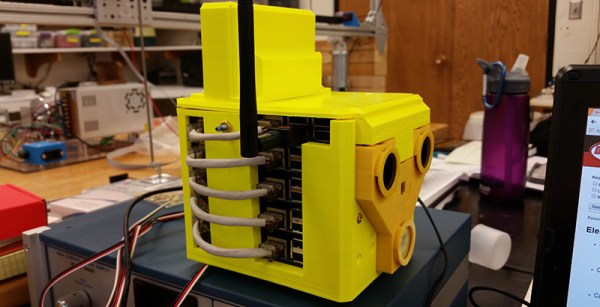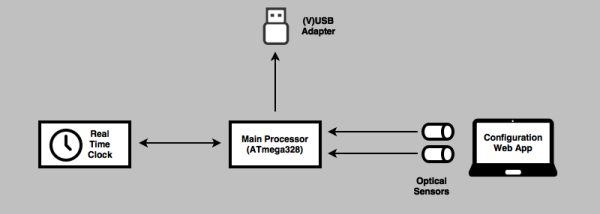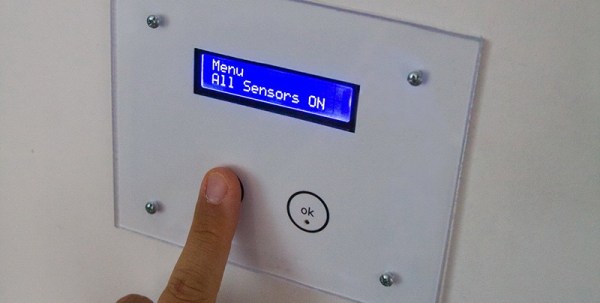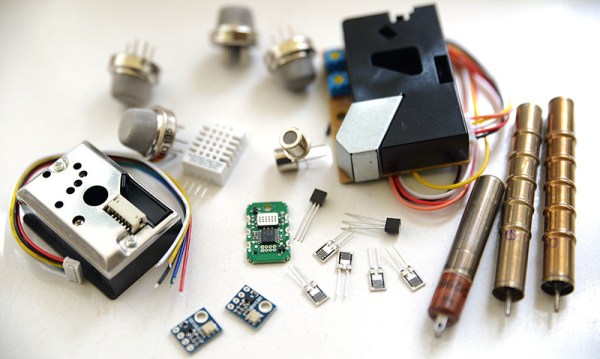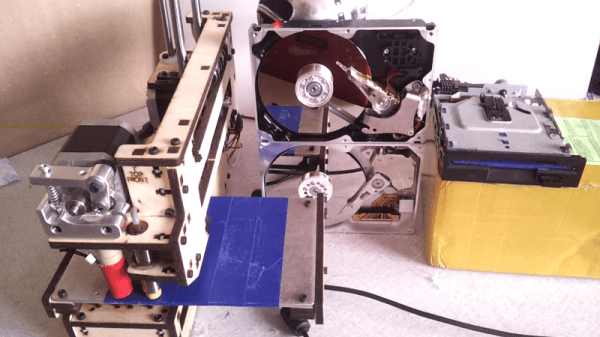[Conrad] was tasked with building a synthetic aperture multispectral imaging device by his professor. It’s an interesting challenge that touches on programming, graphics, and just a bit of electrical engineering.
Tucked inside a garish yellow box that looks like a dumb robot are five Raspberry Pis, a TP-Link Ethernet switch, three Raspberry Pi NOIR cameras, and a Flir Lepton thermal camera. With three cameras, different techniques can be used to change the focal length of whatever is being recorded – that’s the synthetic aperture part of the build. By adding different filters – IR pass, UV, visual, and thermal, this camera can record images in a huge range of wavelengths.
[Conrad] has come up with a completely modular toolbox that allows for a lot of imaging experiments. By removing the filters, he can track objects in 3D. With all the filters in place, he can narrow down what spectra he can record. It’s a mobile lab that’s completely modular, and we can’t wait to see what this little box can really do.

